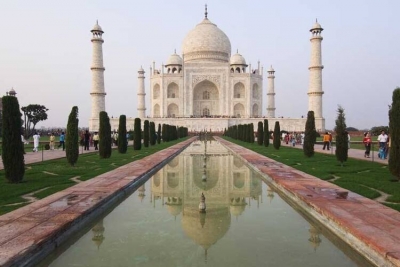
The Taj Mahal was built between 1631 and 1648 by Mughal emperor Shah Jahan in memory of his wife Mumtaz. It is a crown jewel of India’s rich history. Rabindranath Tagore called the Taj Mahal a ‘teardrop on the cheek of time’. It was added to the UNESCO World Heritage List in 1983.
This masterpiece in white marble combines elements of Persian and Mughal architecture. The 42-acre complex with the tomb at its centre includes a mosque, a guest house, a formal garden and boundary walls on three sides. Although the mausoleum was constructed by 1643, work on the overall structure lasted another 10 years. The chief architect of the Taj Mahal was Ustad Ahmad Lahori. Shah Jahan had masons, stonecutters, carvers, painters, and other artisans brought in from all parts of his empire as well as from central Asia and Iran.
Some legends even claim that Shah Jahan had plans to build a Black Taj across the Taj Mahal as his own mausoleum. However, fights and conflicts within the empire probably ended the chances of building a Black Taj.
Both Mumtaz Mahal and Shah Jahan are buried beneath the dome of the Taj Mahal.
Picture Credit : Google




